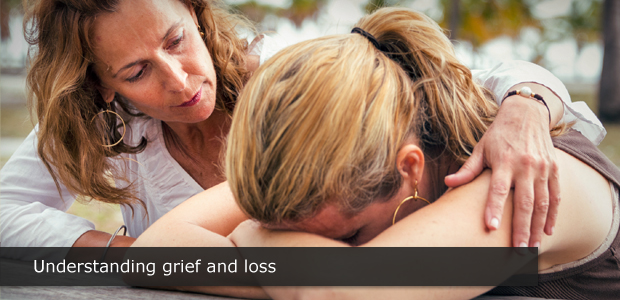Understanding Grief and Loss

I’ve been a Grief Counsellor with the AHS Grief Support Program for 13 years.
Loss, and the resulting grief response, is hard to express unless one has been through a traumatic event like what was experienced by those impacted by the Slave Lake fire in 2011, the southern Alberta flood of 2013 and now Fort McMurray – as the wildfire of 2016 has left its catastrophic imprint.
When I share concepts regarding loss, I usually begin with a simple but inclusive definition of grief that states, “Grief is our response to the loss of anything we value.”
This suggests we start experiencing grief early in life and throughout our lives, learn to adjust to these losses and hopefully find a way to co-exist with what’s now absent. Easy to write in theory; not so easy to accomplish in reality.
In the fall of 2013, I was asked to lend support to those communities who experienced the devastation of the southern Alberta flood. For the following two years, I’ve had many opportunities to listen and teach about loss, grief and trauma to those severely impacted by the natural disaster.
It’s always interesting and, at times difficult, to listen to the various losses that surface in the retelling of peoples’ unique disaster experience. One of the most difficult challenges to those who have experienced various losses is they’re not often acknowledged – or minimized as to their value to the person. Dr. Ken Doka, author of Disenfranchised Grief, defines this type of grief as “A loss that cannot be socially sanctioned, openly acknowledged or publicly mourned. The griever is not extended a ‘right to grieve’.”
Some examples of these “hidden” losses shared with me include the loss of the green space where community members would regularly meet to walk/run the family dog; a loss of a multigenerational family Bible or other valued books that had been passed on from previous generations; loss of home plants, gardens, collections and photos; and distinct landmarks and townscapes.
Disenfranchised losses can be those things that are, for the most part, visible to the eye. But they can also be as small as a special piece of jewelry, a valuable piece of paper with precious words or something that was tucked away somewhere that represented a special occasion or memory. Unfortunately, it can be hard to find someone who understands just how much these hidden, unacknowledged losses have contributed to the overall sense of stress, anxiety and frustration associated with the disaster.
The dynamics of Disenfranchised Grief contribute to a broader context as to why a disaster affects people so deeply. As I have often shared, the valley of despair in grief is deeper, wider and darker than anyone can imagine unless one has been through the same valley.
The value of sharing and naming these hidden losses with those who “get it” can contribute to a sense of validation that each and every one of these losses is important to acknowledge and grieve. And to remember, “Grief is our response to the loss of anything that we value.”
I share with most of those I counsel that grief usually needs the minimum of one year before someone starts to get a sense that, “I’m now in control of my grief, rather than grief is still controlling me.”
However, utilizing a three-year timeframe to work through our losses acknowledges that, for some, rebalancing and rebuilding is still in progress. With individual differences in coping mechanisms, trauma histories and personal resiliency, the three-year timeframe acknowledges that the return to a more familiar level of functioning may take more time than expected. Even though three years for recovery may surprise some people, it’s not unreasonable to look at an even longer recovery period of five, seven or even 10 years, depending on the complexities of the situation.
The process of recognizing all that has been lost and adjusting to life after a disaster takes time.
Hopefully, the concept of Disenfranchised Grief gives people a better understanding of grief, loss and the recovery process following a traumatic event.
For more information about grief and disaster recovery visit MyHealth Alberta at:
https://myhealth.alberta.ca/Alberta/Pages/recovery-after-disaster-emergency-resources.aspx










